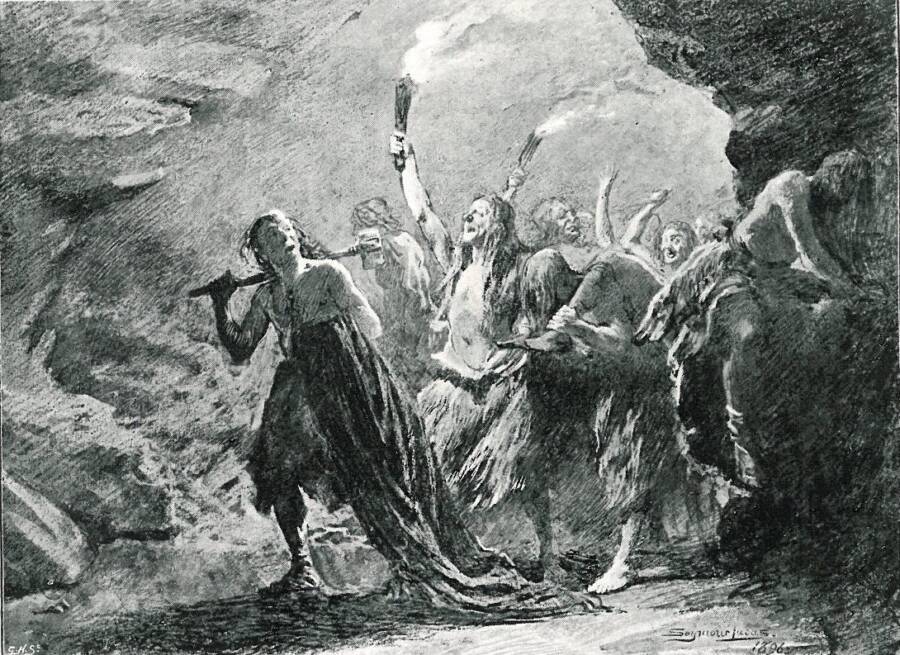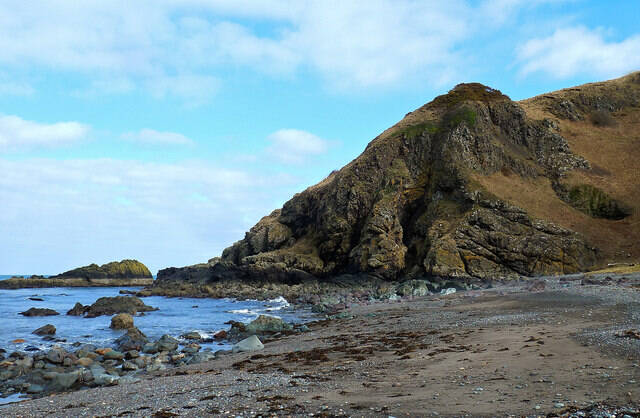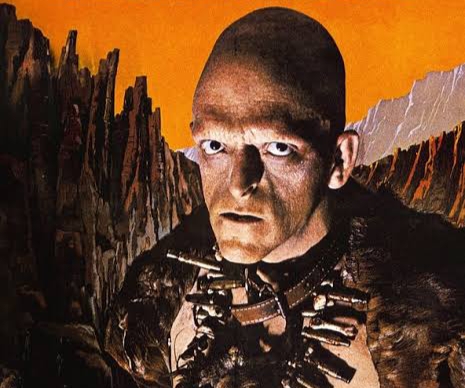This is the legend of Alexander “Sawney” Bean, often referred to as Scotland’s most infamous cannibal. You may be familiar with Wes Craven’s 1977 horror movie The Hills Have Eyes.
It’s the story of a group of travelers who fall victim to a deranged and homicidal family of mutants in the Nevada desert.
What you may not be aware of is that Wes Craven was inspired to write the movie after reading about the alleged true story of Sawney Bean and his cannibal family.
The were said to have been a cannibalistic clan from Scotland responsible for the deaths of over 1,000 people. But did any of that actually happen or is it just a legend?
Brace yourself, for today’s journey takes us deep into the heart of Scotland to unravel the macabre tale of Sawney Bean. Join us, as we lift the veil on a story where horror meets history.
Nestled deep in the folds of Scottish folklore lies a tale so grotesque, so deeply disturbing, that its authenticity has been questioned over the years.
Origins and Early Life of Sawney Bean
The history of Sawney Bean is shrouded in the mists of time, with the exact dates of his birth and heinous deeds remaining unclear.
Legend places him in the late medieval period, during the reigns of James the First and James the Sixth of Scotland, between the 13th and 16th centuries.
Born in East Lothian to a laboring family, Sawney showed an early disdain for honest work. Instead of following in his father’s footsteps, he chose a life of crime and debauchery.
After leaving his home at a young age due to his unwillingness to earn an honest living, he married a woman named Agnes Douglas, who by some accounts was a witch who went by the name Black Agnes.
She allegedly shared his sinister inclinations, and both found refuge in a remote coastal cave known as Bennane Cave near Ballantrae in Ayrshire.
This cavern, hidden by high tides for the majority of the day and extending almost a mile into the hillside, provided the perfect lair for their nefarious activities.
Over the next two decades, the Beans expanded their family in this concealed environment, with estimates suggesting they had eight sons, six daughters, 18 grandsons, and 14 granddaughters.
The clan’s exponential growth was primarily the result of incestuous relationships within the cave.
The family formed a close-knit unit of criminals, with each member contributing to their shared life of crime.
Crimes and Cannibalism

The Bean family survived mainly through the ambushes of travelers and local villagers. They’d attack during the night, robbing their victims of valuables and then dragging them back to their cave.
The unfortunate souls met a grim fate there: they were butchered, their body parts pickled or dried for later consumption. Leftover remains were discarded into the sea, though occasionally they washed ashore, bringing terror to nearby villages.
Despite countless disappearances, the Bean family eluded capture for over two decades. The countryside was terrorized, inns were deserted, and travelers feared for their lives.
Search parties were dispatched to find the murderers but turned up nothing, although this didn’t stop them from accusing and lynching innocent people.
Yet, the cunning of the clan and the remoteness of their dwelling meant that their secret remained hidden.
Capture and Punishment

The clan’s reign of terror eventually came to an end when they ambushed a couple returning from a fair.
While they managed to kill the woman, the man fought back fiercely, fending them off until other travelers approached, causing the Beans to flee.
This encounter provided enough evidence for the authorities, leading to a manhunt.
Now that the murderers had been discovered, King James himself came to Bennane Head with an army of 400 men and bloodhounds to track them down.
The bloodhounds eventually led the men into the cave, where they discovered the gruesome remains of hundreds of people.
The clan’s capture was swift and they were taken to Edinburgh and tried for their crimes. The evidence of their atrocities, including heaps of jewelry, preserved body parts, and pickled limbs, was overwhelming.
The clan’s fate was sealed: the men were dismembered and left to bleed to death, while the women and children, after watching the grisly fate of the men, were burned alive.
Cultural Impact

The legend of Sawney Bean has had a lasting impact on horror folklore. While some believe the tale is a mere myth or an exaggerated version of actual events, it undoubtedly warns about the dangers lurking on lonely roads.
This gruesome tale has also permeated pop culture.
Wes Craven’s 1977 horror film, “The Hills Have Eyes,” was inspired by the Bean clan, telling the story of a family of cannibalistic mutants preying on travelers in the Nevada desert.
The themes and gruesome nature of the Sawney Bean legend can also be found echoed in various other horror films and literature throughout the years.
In Conclusion
The main source for the story is The Newgate Calendar, which was a crime catalog of Newgate Prison in London, but no other historical documents have ever been found that mention Sawney Bean or his family.
If thousands of people had gone missing like the story claims, there would probably be some kind of record or at the very least mention it in a newspaper.
The first printed version of the story didn’t come out till the 18th century. It’s worth noting that many people had in fact been tried and convicted of cannibalism during these times, so it’s not too far-fetched to think that it actually could have happened.
Whether fact or fiction, the story of Sawney Bean and his cannibal clan remains a haunting piece of Scottish folklore, a chilling reminder of the horrors that can lurk in the shadows of society and the dark corners of our world.
It’s possible that the story of the cannibal Sawney Bean was inspired by real events and was passed down through word of mouth for generations, with each retelling adding grisly details that strayed from the truth.
Whatever the case may be, people today still make the journey to Benanne Head to visit Sawney Bean’s cave to look for some clues about their heinous crimes.
